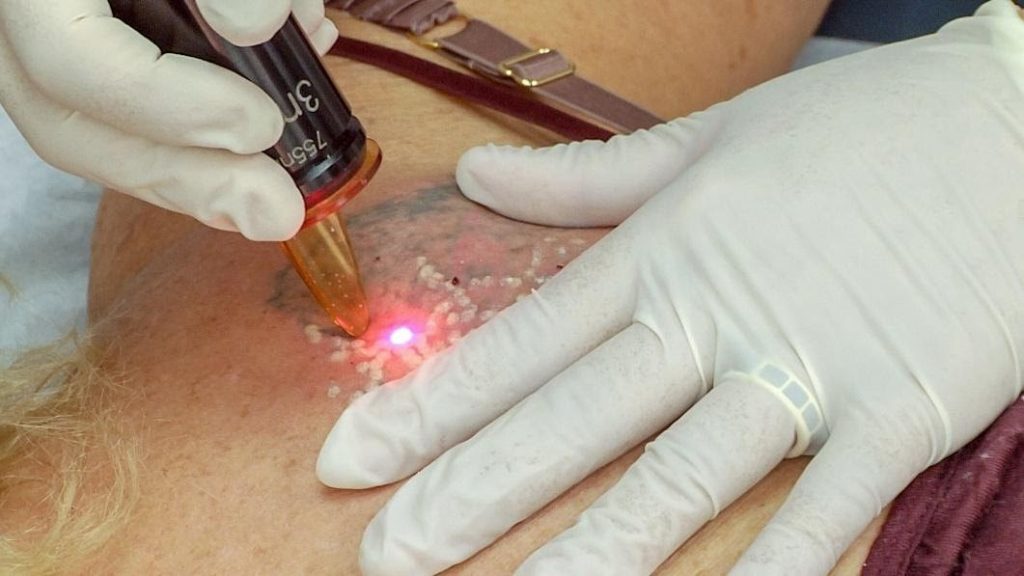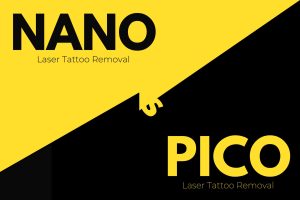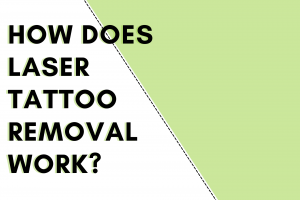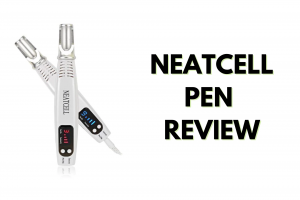Tattoo removal is a booming industry. According to a survey conducted by Dalia Research (2018), 46% of people have a tattoo, half of them having 4 or more tattoos. Since tattoos are only growing in popularity and numbers, ‘tattoo regret’ has become a very real thing. There are several reasons why people want to get rid of their tattoos. This could be because of personal reasons, poor work by the artist, or for a more formal look. Whatever it is, they are willing to spend as much as needed. According to the Tattoo Removal Market Report, in 2016, we spent $457.5 million on tattoo removals, and this is projected to grow at a rate of 16.2% in 2020-23.
This is a step by step guide for starting a tattoo removal business:

1. Tattoo Removal Equipment Choices
The business revolves around the quality and choice of the treatment process and the equipment that is picked. The three major options are below.
Tattoo Removal Creams:
Tattoo removal creams (yet to be approved by the FDA) have flooded the market in recent times. However, they have proved to be ineffective as these creams fail to guarantee full removal of tattoos, and at best leave a distorted version. Moreover, the chemicals in these products can have serious side effects like rashes, redness, inflammation, burning, permanent scars, nausea, swelling, and other potentially life-threatening allergic reactions.
Surgical Removal:
Surgical excision is a medical treatment where the tattooed skin is cut out with a scalpel and the remaining skin is stitched back together. Although quick and effective, it tends to leave a permanent scar and does not work well when it comes to large tattoos. Dermabrasion is another type of medical procedure for tattoo removal. However, its efficacy has been questionable and is not generally the best bet.
The best course of treatment for tattoo removal is using a laser tattoo removal machine.
Laser Tattoo Removal Machine:

Laser removal has emerged as the go-to treatment as it is effective and comparatively safe, being a non-invasive skin treatment. During the procedure, the laser penetrates the skin and breaks the tattoo ink into smaller particles, which is then naturally filtered out by the body’s immune system. It is very important to make an informed decision when it comes to purchasing a laser tattoo removal machine. Different aspects that need to be considered include:
(i) Wavelengths – Different colors of tattoo ink require lasers of different wavelengths. While black is the most commonly used ink, other colors are also used and require different wavelengths. It is important to make sure that the laser machine(s) can switch between different wavelengths. While black is the easiest to break down, light blue and green are few of the more stubborn colors.
(ii) Peak Power – A laser tattoo removal machine is the product of energy and pulse width. The more the peak power, the better the ability of the machine to break dark ink. Higher Peak Power results in higher quality of results.
(iii) Ease of use – Tattoo removal machines are sophisticated devices. Thus, it is important to make sure that its interface is precise, clear, and easy to use. Its warm-up time is also an important consideration to think about.
(iv) Maintenance and Support – Buying a laser tattoo removal machine is a long-term decision with a laser company. Thus, the quality of technical support, training program (for setting up and initializing the machine), response time, warranty program, and consulting services are indispensable factors in choosing the right company. Purchasing a second-hand laser from a third party often does not come with service plans. In such cases, recertification fees could be as high as $25,000.
(v) FDA Clearance – For quality and safety guarantee, it is also important to ensure that the equipment has been FDA approved.
Some of the most reputable laser tattoo removal machine suppliers are Astanza, Cutera, CynoSure, Quanta and Lutronic to name a few.
Types of Laser Tattoo Removal Machines
Q switch laser tattoo removal has been the ideal choice of technology for several decades. It generates laser beams that travels in nanoseconds. There are three types of Q switch lasers – Ruby Laser (694 nm), Alexandrite Laser (755 nm) and Nd: YAG Laser (1064/532 nm). Q switch Nd:YAG laser is the most common machine, suitable for almost all skin types.
Recently, Picosecond laser tattoo removal machines have emerged as a strong contender to the Q-switched ones. At the speed of picoseconds, this technology is faster. It breaks down the ink into particles as small as dust, making it an easy removal process.
Tattoo Removal Machine Cost:
The average price of a new laser tattoo removal machine varies between $80,000-$150,000.
Pro-tip: Section 179 of the IRS code is a tax break aimed at encouraging investments in small businesses, thus acting as a growth incentive. This tax incentive can be used by purchasing or leasing capital in the same calendar year. By doing so the business may be eligible to deduct the full purchase price from gross income. For the year 2020, the deduction limit has been set at $1,040,000 with an investment limit of $2,590,000.
2. Tattoo Removal Business Space

The ideal space for a tattoo removal clinic consists of a waiting room, a treatment room, and an office. This may not need more than 800 square feet of space. The set-up of the treatment room is vital for safety reasons. It must be a closed room with proper airflow and regulated room temperature, given that high temperatures can cause damage to the equipment. An inline air conditioner is recommendable. A room with no windows may be preferable or use curtains to block out sunlight during the treatment. Make sure there are no lofty walls. The laser light can travel through such walls and cause eye damage. As an infection control measure, the treatment room must not have a carpet. This is because carpet fibers can settle on the laser optics and cause damage to the equipment. Also, don’t forget to put up appropriate safety signs on the door.
Mobile Clinic:
Tattoo removal services can also be provided in a mobile clinic. A mobile clinic significantly brings down start-up costs. This can be done by transforming a modest vehicle such as a high-roof van, a minibus or a retired ambulance into a mobile treatment room. Necessary precautions need to be taken. This includes and is not limited to – secure set up of the laser machine, covered windows for safe treatment process, airflow regulation, sterilization of the interior, electrical hook-up (such as a generator), and sturdy arrangement. It is important to check state board regulations with respect to mobile tattoo removal programs. Also, laser companies may vary on their warranty programs for mobile services.
3. Marketing and Business Plan

Most people explore and compare services online, so having a digital presence is an important first step. Some marketing tips relevant to the tattoo removal business:
– Creating a user-friendly, attractive, and up-to-date website is one of the first steps. This step can be done by using Squarespace (https://www.squarespace.com/) or hiring a web developer on Fiverr (https://www.fiverr.com/).
– Posting high-quality blogs on a regular basis to increase SEO (so that your business comes up on the first page in Google).
– Having an active presence on social media like Facebook, Instagram, Pinterest, etc.
– Building a network on LinkedIn.
– Hosting relevant webinars can also greatly contribute to building a brand identity.
– Get the business listed on sites like Google Local and Yahoo Local. This is a great way to pop-up in searches of ‘nearby’ services, making sure that local customers get a good look at the business.
– Reviews Matter. Having an account on Yelp and Trust Pilot, adorned with good customer reviews, goes a long way in gaining the trust of prospective customers.
– Partnering with tattoo shops- The world’s most tattooed man has spent approximately 1,000 hours with tattoo artists. As individuals keep going back to tattoo shops to get some new ink, they are likely to discuss a tattoo they no longer want. Partnering up with tattoo business will ensure that these potential customers are directed to the tattoo removal business too. This can significantly expand client base and ensure a regular flow of new customers.
4. Licenses, State Regulations, and Insurance
One of the most crucial and vital requirements for running this business is to acquire the necessary licenses and insurance cover and meet state regulations.
Regulations concerning who can own and who can operate a tattoo removal laser device varies from state to state. In many states, tattoo removal is regarded as a medical procedure. Hence, it may require a medical professional, such as a registered nurse or a physician to perform the laser surgery. For example, some states like Ohio and New Jersey only allow physicians to operate a laser. Under such circumstances, running a laser tattoo removal clinic without a physician to operate the laser would be a punishable offense. On the other hand, in some states, establishing a medical director relationship may be sufficient and is considered the standard requirement. Under this, a certified laser technician, even those coming from a non-medical background, can operate a laser. Some state medical boards have vague laws or even no specific laws related to tattoo removal.
There are also certain licenses and permits that are required before starting a business such as sales tax license, salon license, permanent physical address for a mobile tattoo removal business, etc. Given the unique set of risks involved in running a business, and responsibility towards the staff, the customers, the clinic, and yourself, it is preferable to choose a more flexible policy when it comes to insurance cover. This may include but not be restricted to – treatment risk coverage, public liability insurance, general liability insurance, professional liability insurance, employer’s liability insurance, malpractice insurance, buildings cover, contents cover, work away cover, and/or employment practices insurance. Choose what is right for the business structure and bring them under a single umbrella policy.
Given the various legal requirements that are required, looking for legal counsel could be beneficial as well.
5. Training/Hiring

The clinic can function smoothly with a small number of employees – just an office manager and a laser technician. While some states require a medical practitioner to perform laser surgeries, a majority of states allow certified individuals to perform the procedure. The tattoo removal business may hire a laser technician with appropriate professional certifications, which includes – Advanced Laser Tattoo Removal Certification, Laser Safety Officer (LSO) Certification, and Certified Laser Specialist (CLS) Certification. The average tattoo laser removal salary of a laser technician is $17.26 per hour [Source: simplyhired.com]. There are some states where it is not mandatory to hire a medical professional to operate a laser. In such cases, it is a legal obligation to affiliate the clinic with a medical director. This is generally an off-site licensed physician who is officially responsible for supervising laser operations at the business. You can also get certified as a laser technician by enrolling in a high quality and comprehensive training program run by any recognized institute, like the National Laser Institute, that might be as short as two weeks.
6. Is Tattoo Removal a Profitable Business?
The average cost of a tattoo removal treatment ranges from $200-$500. Generally, appointments do not take longer than 15 minutes. This means that the business can earn at least $800 in an hour. Moreover, each patient may require several sessions before the tattoo completely fades away. The total revenue generated from each patient could be anything from $1,000-$10,000 which makes it possibly a more profitable business.
Tattoo Removal Businesses are opening all over the country, as more and more consumers look to modify tattoos. This is a great time to open up a tattoo removal business in your area.





Your way of describing all in this paragraph is actually pleasant, every one can effortlessly know it, Thanks a lot.